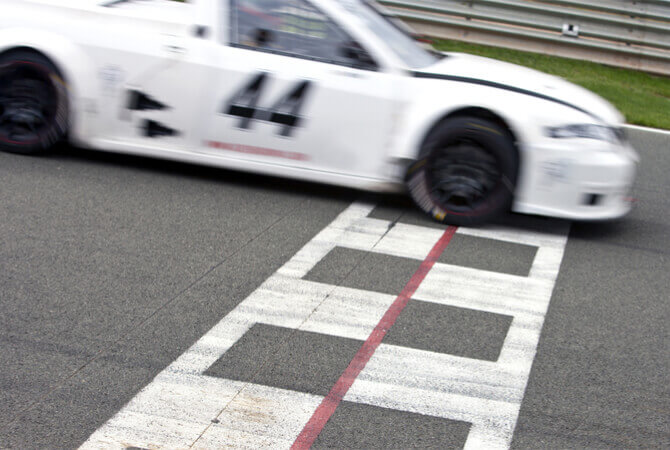
Anyone who’s a fan of stock car racing knows the dangers that follow your favorite driver around every lap. The blistering speeds of 200 mph. The perils of side-by-side racing. But, did you know that some of the safety innovations you take for granted in your family car may have been developed on the track by NASCAR? Uniquely, these safety features can help lower your car insurance premiums by reducing your risk of injury, as well as minimizing the damage to your vehicle in an accident.
Of course, on the surface, NASCAR Nationwide and Sprint cars differ somewhat from your run-of-the-mill passenger car. Race cars are equipped with elaborate and mandatory seat belt systems, roll cages, window nets and highly protective head-and-neck restraints. But, the similarities are more commonly shared than what you actually see on the surface.
A perfect example of NASCAR’s contribution to U.S. automakers was to help them better understand driver safety with the use of various types of restraints. Because many of them experienced a number of high-speed crashes during their racing career, drivers were regarded as an excellent source of safety information. They reported that seat belts would function with far less of a jolt if the fabric had some flexibility to ease the sudden shock when hitting a wall or another car. Auto manufacturers followed the advice and developed seat belts with a bit more give to slow a driver down instead of slamming him to an abrupt stop.
Although you probably haven’t given it much thought, the next time you strap your baby or young child into his car seat, you may want to consider this — the safety principles associated with the belt and harness system a driver wears during a 500-mile race is the same basis adopted for today’s child-restraint car seats. The shared ideas that keep NASCAR drivers, your child, and you safer behind the wheel were pioneered by stock car drivers.
One of the least obvious, but possibly most important pieces of safety technology, is not plainly visible. However, it’s incorporated into our everyday cars. To additionally protect the driver, NASCAR requires a structure known as a roll cage which, in simple terms, is nothing more than a network of steel tubes designed to absorb side impacts to greatly reduce or eliminate the chance of potential injuries. The reason you might take this vital technology for granted is that you can’t see it, however, production car safety cages are hard at work, well-concealed beneath the carpet, headliner, door trim, and other interior features.
But, auto racing’s contributions to the auto industry are not just a matter of safety. Hood scoops, designed to allow more cold air into the engine compartment to improve performance, are part of racing technology. The same can be said for rear spoilers. Not only do they look good, they also serve a special function – to keep cars stable at high speed. Race car teams and designers were some of the first to use wind tunnel testing to create the more aerodynamic shapes to cut smoothly through the wind and reduce fuel consumption.
So, whether you’re aware of it or not, many of the safety and artistic innovations we take advantage of every day in our personal cars were probably adapted from research related to auto racing.
One thing you shouldn’t take for granted is if you’re getting the best rate on your car insurance. Why not get a free car insurance comparison today?



